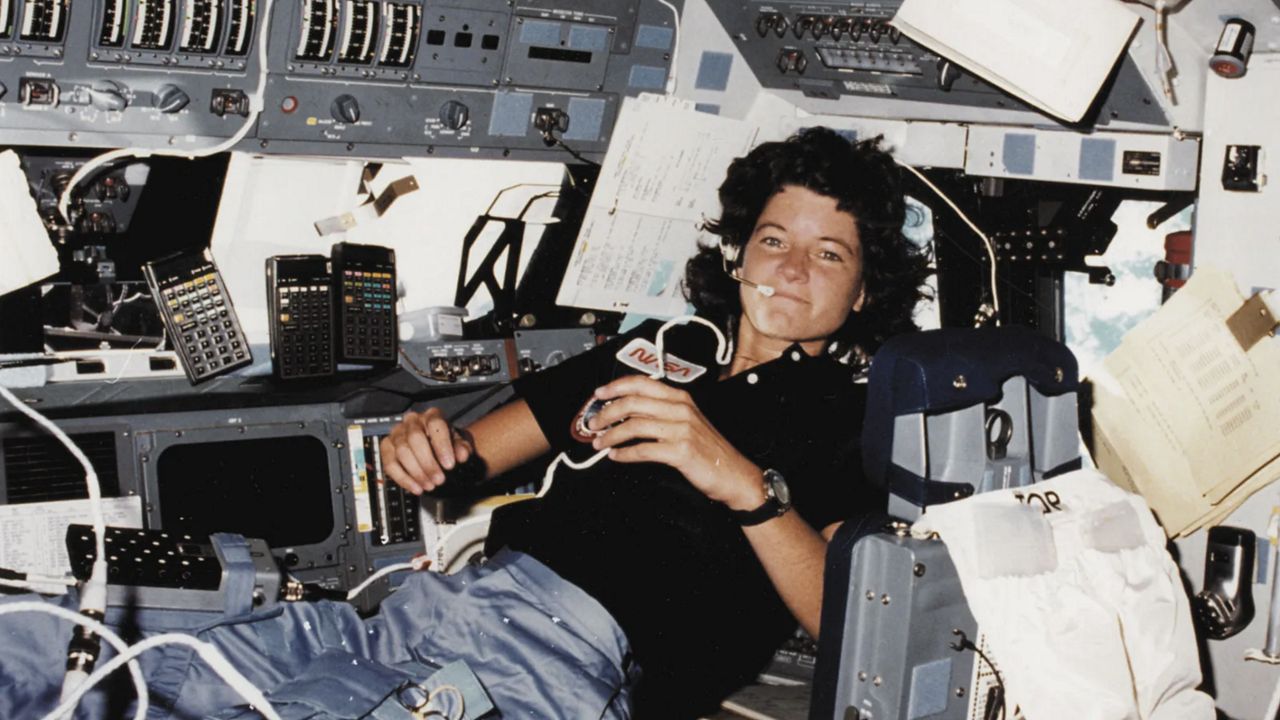Sally Ride: the first American woman in space
Sally Ride flew on two Space Shuttle missions. Sally Ride was born in 1951 in California and grew up in Los Angeles, and earned four degrees at Stanford University. After attending Stanford and earning four degrees, she joined NASA and flew on two Space Shuttle Challenger missions. She completed NASA training in 1979 and was chosen for spaceflight as a mission specialist for STS-7 in 1983. Her second and final mission was as a Mission specialist on STS/41-G in 1984, and she was scheduled for a third mission in July 1986. In 1989, she became a professor of physics at the University of California, San Diego, and acted as the director of the California Space Institute. In 2001, she founded a nonprofit run by UCSD to inspire young people and promote STEM literacy. Ride was inducted into the Astronaut Hall of Fame and received a plethora of awards and honors in her name and name.

Được phát hành : 2 năm trước qua Meteorologist Reid Lybarger trong Weather
When it comes to pioneers of space exploration, the conversation has to include Sally Ride.
The physicist and southern California native was the first American woman to fly in space, and only the third woman in space.
After attending Stanford University and earning four degrees, including a PhD in physics, Sally Ride joined NASA and flew on two Space Shuttle Challenger missions, once in June 1983, and again in Oct. 1984.
Sally Ride was born in 1951 in California and grew up in Los Angeles. Growing up, she was a top-ranked tennis player in the state of California, and eventually played varsity tennis at Stanford University.
She earned four degrees while attending Stanford: a Bachelor of Science degree in physics, a Bachelor of Arts degree in English literature, a Master of Science degree in physics and a Doctor of Philosophy (PhD) in physics.
During her graduate studies at Stanford in 1977, she saw an announcement on the front page of The Stanford Daily, the school newspaper, that NASA was looking for young scientists and a new group of astronauts for the Space Shuttle program.
After applying along with 8,079 other people, she became one of the 208 finalists, and eventually became one of the 6 women selected as an astronaut candidate by NASA in 1978 after physical fitness tests, psychiatric evaluation and personal interviews.
Ride completed NASA training in 1979, officially becoming an astronaut, making her qualified and eligible for assignment on Space Shuttle missions.
After five years with NASA, officials eventually chose her for spaceflight as a mission specialist for STS-7 in 1983. It was NASA’s seventh Space Shuttle mission, and the second mission for the Space Shuttle Challenger.
STS-7 was a pioneering mission not only for Sally Ride, but for women in spaceflight. It marked the first time an American woman went into space and made her the third woman to go into space after Soviet cosmonauts Valentina Tereshkova in 1963 and Svetlana Savitskaya in 1982.
Ride’s second and final Space Shuttle mission was as a mission specialist on STS-41-G in Oct. 1984. It was Space Shuttle Challenger’s sixth flight, and the first crew to include two women.
NASA scheduled her for a third mission on the Space Shuttle Challenger, STS-61-M, to be flown in July 1986. NASA cnaceled that mission after the Space Shuttle Challenger disaster in Jan. 1986, which eventually suspended all Space Shuttle missions for more than two years.
After completing her two Space Shuttle missions, she spent the rest of her time with NASA serving on the Rogers Commission, investigating the 1986 Challenger disaster. She also worked at NASA headquarters in Washington, D.C., helping lead NASA’s long-range and strategic planning efforts.
Ride announced she was leaving NASA in 1987, after 9 years of service logging more than 343 hours in space.
In 1989, Sally Ride’s career took her to the University of California, San Diego, where she became a professor of physics until her retirement in 2007. She also acted as the director of the California Space Institute, a research institute of the University of California, from 1989 to 1996.
Along with her work at the University of California, she and her partner wrote six children’s books about her time as an astronaut and space exploration.
In an effort to help women and girls who wanted to study science and math, she founded ‘Sally Ride Science’ in 2001, a nonprofit run by UCSD to inspire young people and promote STEM (science, technology, engineering and mathematics) literacy.
In her own words in an interview with NASA, “I wanted to start a company that would create good science programs and materials that would capture girls’ imaginations, show both boys and girls a variety of role models, and encourage them to continue to pursue their interests as they grow older.”
Sally Ride died in 2012 at 61 years old after a 17-month battle with pancreatic cancer. After her death, President Obama awarded her the Presidential Medal of Freedom, the highest civilian honor in the U.S., in 2013.
Sally Ride was also inducted into the Astronaut Hall of Fame, the National Women’s Hall of Fame and the Aviation Hall of Fame, along with a plethora of other awards and honors in her name.
A collection of her belongings are on display in the Smithsonian’s National Air and Space Museum, including her in-flight suit from STS-7, her tennis racquet from her younger days and more.
To this day, her company hosts workshops and provides scholarships that help educate and inspire kids she paved the way for by becoming the first American woman in space.
Our team of meteorologists dives deep into the science of weather and breaks down timely weather data and information. To view more weather and climate stories, check out our weather blogs section.
